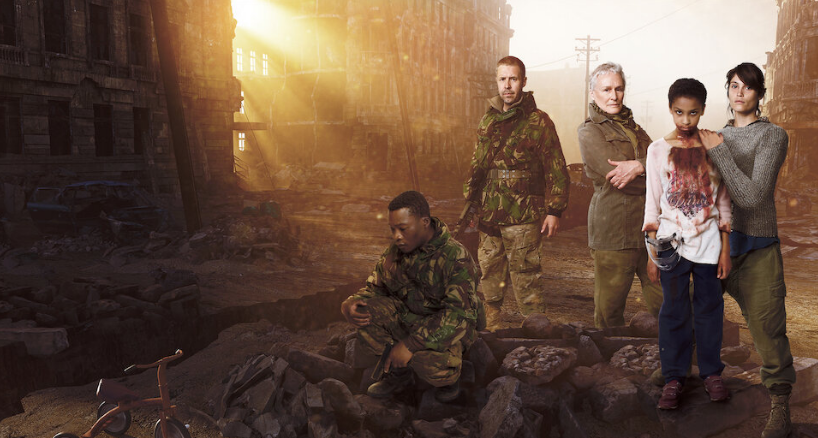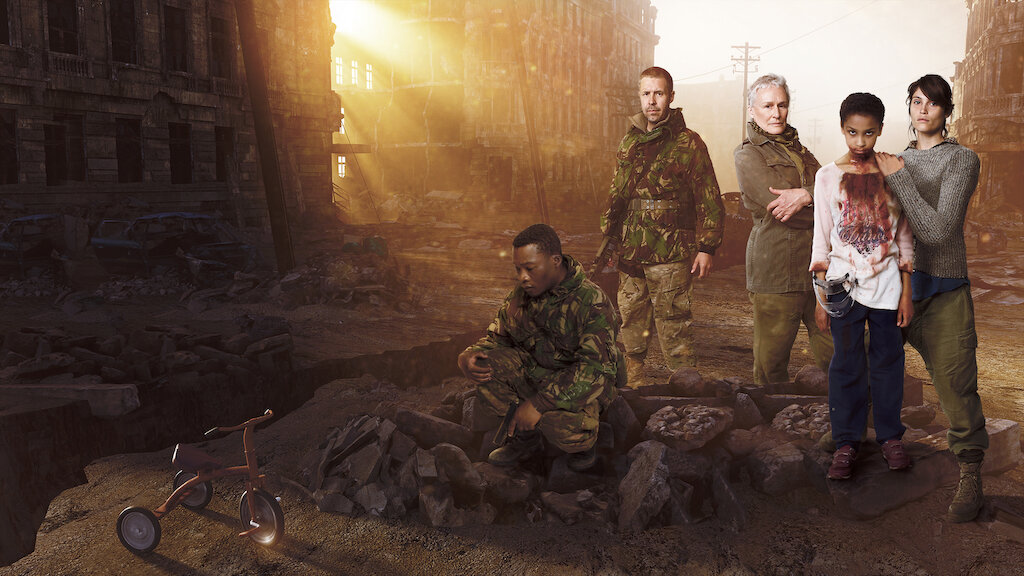The Girl with All the Gifts (2016)

The Girl with All the Gifts (2016) is a post-apocalyptic horror film based on the novel of the same name by M.R. Carey. Directed by Colm McCarthy, the movie explores a world ravaged by a fungal infection that has turned most of humanity into mindless, flesh-eating “hungries.” It offers a fresh and thought-provoking take on the zombie genre, combining elements of dystopian science fiction, survival horror, and ethical dilemmas.
Overview:
- Director: Colm McCarthy
- Starring: Sennia Nanua, Gemma Arterton, Paddy Considine, Glenn Close
- Release Date: September 23, 2016
- Genre: Post-apocalyptic, Horror, Sci-fi
Plot Summary:
The story is set in a future where a fungal infection has decimated most of the population, turning people into fast, ravenous zombies called “hungries.” In a fortified research facility, a group of hybrid children, who are capable of thinking and feeling but still crave flesh, are being studied by scientists in hopes of finding a cure. These children are second-generation hybrids, meaning they were infected in the womb but retained their cognitive abilities.
Among these children is Melanie (Sennia Nanua), an exceptional and highly intelligent girl who is curious, polite, and extremely loyal to her favorite teacher, Miss Justineau (Gemma Arterton). Despite her dangerous potential, Melanie forms a bond with Miss Justineau, who treats her with kindness and compassion.
When the facility is overrun by hungries, Melanie, Miss Justineau, Sergeant Parks (Paddy Considine), and Dr. Caldwell (Glenn Close) escape. Together, they embark on a perilous journey through a ruined world, where the balance between humanity and survival becomes increasingly blurred. As they struggle to find a safe haven, Dr. Caldwell hopes to use Melanie to develop a cure for the infection, while Miss Justineau questions the ethics of exploiting Melanie for that purpose.
Themes and Exploration:
- Humanity and Monstrosity: One of the central themes of the film is the question of what it means to be human. Melanie, despite being part-hungry, is portrayed as empathetic, intelligent, and capable of moral reasoning, while some of the “normal” humans are shown to be cold and ruthless. This subversion of typical zombie tropes challenges the audience’s understanding of monstrosity and humanity.
- Ethics and Survival: The movie explores the ethical dilemma of using the hybrid children for experimentation. Dr. Caldwell views Melanie as a means to an end—a tool to develop a cure—while Miss Justineau believes that Melanie deserves to live her life free from such exploitation. The tension between scientific advancement and moral responsibility is a recurring theme throughout the story.
- Evolution and Change: Another key theme is evolution, both in a biological and societal sense. The fungal infection is shown as a force of change, leading to the creation of hybrid beings like Melanie, who represent a new stage in human evolution. By the end of the film, the idea that the “old” humans may be doomed, while the hybrids are the future, is fully realized.
Characters:
- Melanie (Sennia Nanua): The protagonist, a young hybrid girl with remarkable intelligence and curiosity. Melanie’s journey is both physical and emotional, as she grapples with her identity and her role in the world.
- Miss Justineau (Gemma Arterton): A compassionate teacher who forms a deep bond with Melanie. She acts as Melanie’s protector and represents the moral center of the story, advocating for the children’s right to live.
- Dr. Caroline Caldwell (Glenn Close): A scientist determined to find a cure for the infection at any cost. While she sees Melanie as a key to saving humanity, her methods raise ethical questions.
- Sergeant Eddie Parks (Paddy Considine): A gruff and pragmatic soldier who initially sees the children as threats but gradually comes to respect Melanie.
Visuals and Tone:
The film has a bleak, atmospheric tone, with haunting visuals of a world overtaken by nature. The fungal infection, inspired by the real-life Ophiocordyceps fungus, creates an eerie backdrop as cities crumble and vegetation reclaims the land. The “hungries” are terrifying in their speed and ferocity, but the true horror often comes from the moral choices the characters face.
Reception:
The Girl with All the Gifts was well-received by critics for its unique approach to the zombie genre and its strong performances, particularly from Sennia Nanua in the lead role. The film’s exploration of ethical and philosophical issues, along with its suspenseful and emotional narrative, made it stand out among other post-apocalyptic films.
Conclusion:
The Girl with All the Gifts offers a fresh perspective on the zombie apocalypse genre, blending horror with deep philosophical questions about humanity, ethics, and survival. It challenges conventional notions of good and evil, presenting a world where the lines between human and monster are blurred. Through Melanie’s journey, the film invites the audience to reconsider the future of humanity in a changing world.

![US] The Girl with All the Gifts (2016) - A scientist and a teacher living in a dystopian future embark on a journey of survival with a special young girl named Melanie. :](https://external-preview.redd.it/IPjF15KKY2hxTxC2HfgNKgcoiL328lrtv4Q_KeU-a7w.jpg?width=640&crop=smart&auto=webp&s=8f1b9f8d68c91f7b13a2b37d515562d0ca02b727)














